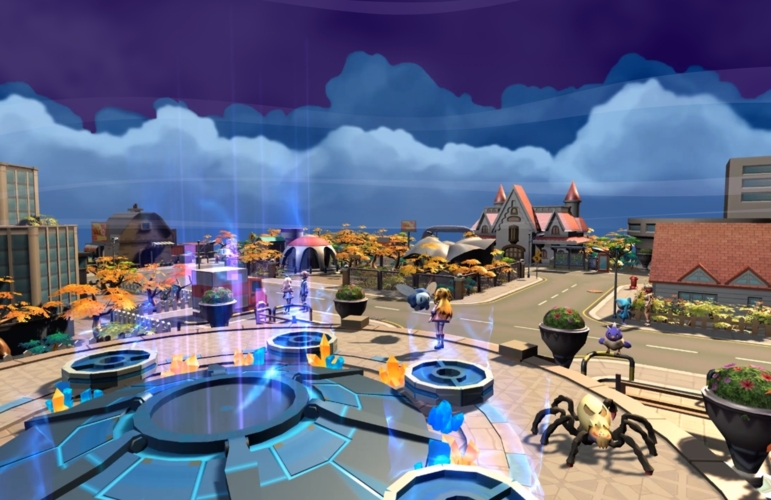When you design a product, what’s the core focus? If you answered with business benefits, revenue or ROI, these are all understandable answers, but they shouldn’t always be your primary focus.
The user-centered design process understands that all of these can only be met by happy customers. If you’re looking to create something to grow your business or maintain users, a user-centric design will ensure it’s something that is actively used.
What is user-centered design?
User-centered design (UCD) is the process of designing a solution with the user at the very core of the focus. At every step of the design, the user’s needs are the main consideration. This creates a path that starts with an essential understanding of the humans that will use such a product, leading through to answering their individual needs.
As a whole, UCD is an iterative process, with as many phases as necessary. It combines research and investigation into users, internal idea generation and testing to ensure the final answer addresses the original problem without getting distracted.
UCD benefits
There are many benefits to the user-centered design process, which is why it’s a common choice for developing new products or solutions.
Better usability
Ultimately, people use your product for a reason. Perhaps one of the biggest UCD benefits is that it puts this front and center, creating solutions that address these needs as effectively as possible.
Meet your business goals
Likewise, your business goals are typically defined by encouraging certain behavior from users. Stores want people to find and buy products, apps want a subscription or constant usage for advertising… there are many outcomes, but the business objectives nonetheless depend upon positive usage. The UCD process ensures this, allowing you to build your business values on top, not the other way around.
It includes KPIs
You have your user needs and business goals, so how do you get from the former to the latter? Well, once you know what user needs are vital for the ultimate objectives, you can measure key performance indicators with this in mind.
For example, office software might focus on productivity, sales tools might focus on shopper activity and other apps might focus on retention rates. All of these lead to business values, such as profit and revenue, but are steps that can’t be overlooked on the way.
Changing business attitudes
Without realistic customer research, many companies simply don’t realize that their approach to the market is old fashioned. There’s a reason Blockbuster was defeated by Netflix. The latter had a strong user-centric approach that enabled their needs (immediate access to films and TV shows) that others weren’t able to offer.
UCD brings in better revenue because it encourages the entire business to shift and update its working model, especially the parts that the end customer sees.
How do you design in a user-centered way?
Because it’s focused on individuals, it should come as no surprise that the user-centered design process focuses on UX, UI and behavioral research.
User Needs
First of all, you need a core understanding of the user, especially in regards to their needs. While other approaches might target audiences based on popular demographics and revenue opportunities, here you need to identify a problem first. After all, you can’t market a product to people that simply don’t have that problem.
Knowing this will tell you plenty - what users want, why they want it and the typical context and background they find themselves in. It will inform technological choices and ensure the final UX is one that answers their needs as quickly, smoothly and effectively as possible.
Emotions & Behaviour
Similar to the above, it’s also important to understand the emotions that an app or service can create. This is similar to a customer journey map; you’re looking for the different emotional changes throughout the journey.
Based on their original need, for example, users might be in a hurry, facing an emergency or simply curious. Knowing this state informs you about the solutions they need.
You can then also use this to encourage positive behavior. There’s a reason food delivery apps use large images and clear, navigable menus. They know their users are hungry and want to order as simple as possible. Likewise, taxi apps like Uber use geolocating to pinpoint where individuals are, removing roadblocks (such as having to call and explain which street you’re on) between the user and their desired solution.
Information
Across all of these factors, information cannot be underestimated. UCD isn’t about guessing - it’s about doing a thorough research and even testing in the field, if necessary. It looks to fully understand problems as much as possible, to ensure the highest chance of success.
Business Goals
Finally, you also need to focus on business goals. As mentioned before, this is where you look to establish key KPIs that will indicate if the product is encouraging users in a way that meets your objectives. Yet this is only possible if you have a full understanding of all of the above.
What is the user-centered design process?
So, with all of this taken into account, how exactly does the user-centered design process work? While there are many variations, the typical approach has 6 key stages.
Research
Here you are looking to understand and define the users' needs and the use context; when, where and why they might use (or look for) your product. You will also start to pair these up with your business requirements - is there a clear correlation between your objectives and the initial user needs?
Research here can take the forms of market research, user interviews, and focus groups. Any and all means to get real, valid data from your target users can be included.
Ideation
After you’ve done extensive research, you can begin the design phase. This is where all the user dates come in handy. You know what the original challenge (the user needs) is, and what the end objective is as a result. UCD then looks to create a solution that does this, while keeping in line with business objectives.
Depending on the extensive nature of the solution you’re designing, this can be quite simple, or quite long. This depends on how many technological or UX choices you need to make, for example - all of which will have been uncovered during the research stage.
Implementation
Once your core design is achieved, you then need to implement it. This is where design meets development. How you develop an app can take money forms, such as agile development. Whatever option you choose, this implementation phase should stick to the groundwork laid out in the previous steps. Unless it’s confirmed by user testing, changes shouldn’t be introduced due to developers or business demands.
Testing
During this stage, which often intertwines with the above phase, you will try to test as much as possible - whether its wireframes, prototypes or proof of concepts, to ensure its meeting the original goals addressed earlier.
The most noteworthy difference here is that you’re not testing the solution in terms of maximum revenue or business needs. You’re testing on behalf of the user (if you’re not testing with users already) to ensure that the product’s long term viability and success comes later. Facebook, for example, didn’t start with in-app ads. It started by ensuring the social media network was actively used.
Release
When all is said and done - and you’re comfortable it works - you can release it! Of course, there’s more to releasing something than simply publishing. Depending on your product, you might need to market, promote or distribute it to ensure effectiveness.
However, this isn’t part of the UCD process; it’s part of releasing any product or service. What UCD does care about, however, comes next...
Refinement
Design processes don’t just stop once the solution is live. It’s a competitive market, so you need to ensure your service stays competitive as possible. Now that you’re getting live data from your product, it’s easier to spot changes or identify improvements.
Perhaps the user needs change and the app needs to adjust. Maybe new technology introduces a key improvement that you now need to implement. Perhaps another competitor simply enters the market. All of these influence the user, so they should influence your design.
User-centered design examples
Now that we’ve explained how the process works, as well as the many UCD benefits, what does the final product look like? A business that favors a user-centric design should be easy to spot. Their solutions aren’t clunky or inelegant; the thing you want to do the most, as a user, is the primary focus of everything they do.
Trello. While the Trello app might seem simple, that’s exactly the point. Atlassian, the owners of Trello, understand that users want to bring the simplicity of a noteboard onto their digital devices, so it focuses on this 100%. No complicated UX, no unnecessary steps… just a smooth solution that keeps users engaged, all of which makes it a viable option for businesses worldwide, which supports Atlassian’s objectives.
Duolingo. An app for learning new languages, Duolingo has a free version, with a business objective of motivating users to pay for the premium version. As such, it has to do a lot to compete in the free-app market, while still showing the potential of the full version. Thanks to clear UX and strong emotive design, with a heavy sprinkling of gamification, Duolingo gives users a casual experience that still benefits them. As a result, more dedicated individuals readily sign up for the full experience.
Nasa. This is a great example because it's not B2C or even B2B - it’s purely internal. Yet mission control still needs solutions that their own employees can use. If it's ineffective, difficult to use or otherwise fails to meet these objectives, it can cause problems in the wider mission. UCD was the perfect answer for this, especially since Nasa has access to all the users straight away (their own employees), which meant that direct research and feedback is readily available.
Conclusion - The UCD Benefits Are Worth It
Very few businesses, if any, can say their users don’t matter. Products have to answer to somebody and, even if there isn’t a direct competition, ineffective solutions lead to low performance elsewhere. By focusing on these needs first, the user-centered design process is the best way to eliminate any frustrations born from a lack of foresight. Ultimately, a better product leads to better usage - which helps organizations meet their objectives.




